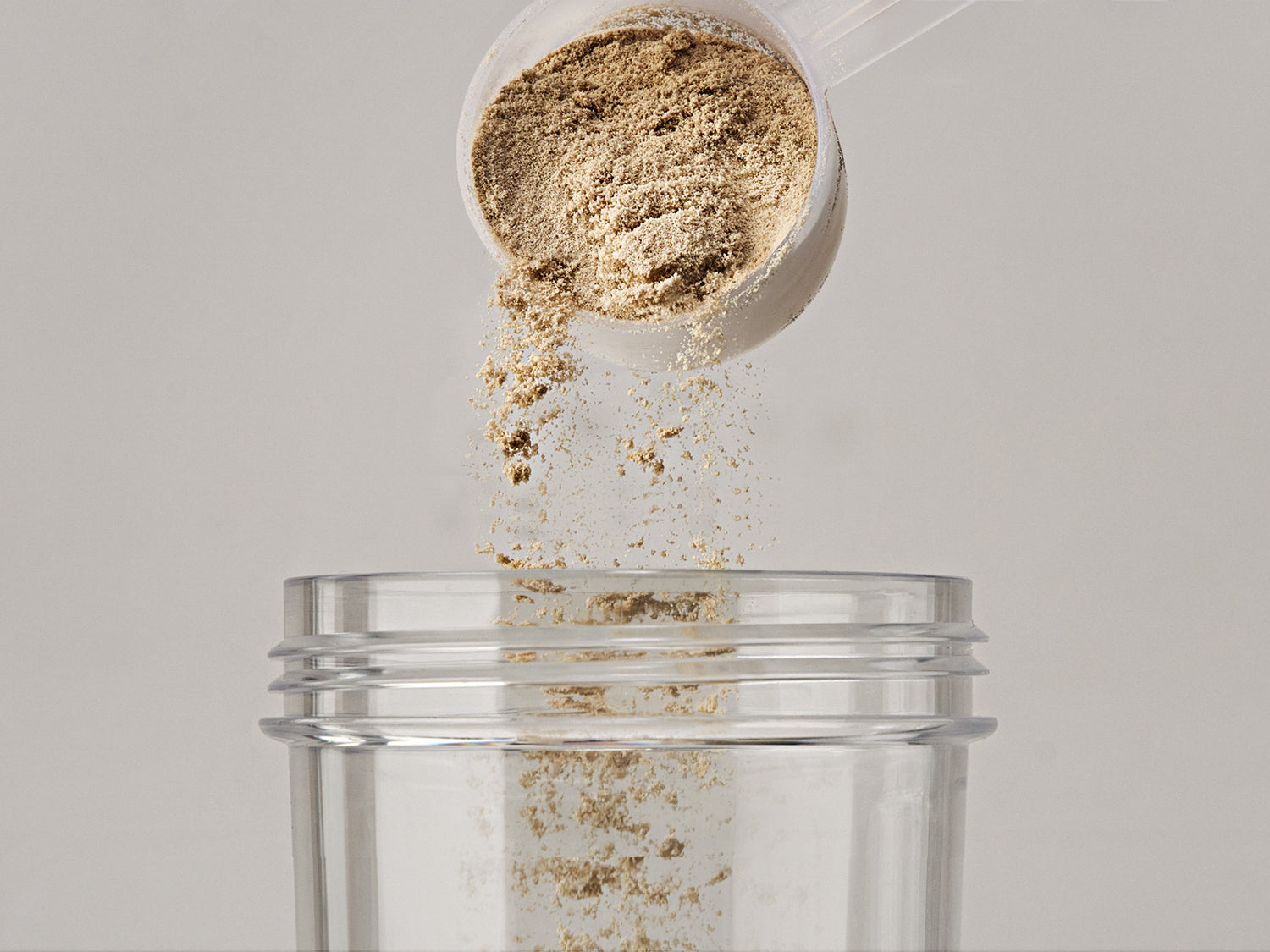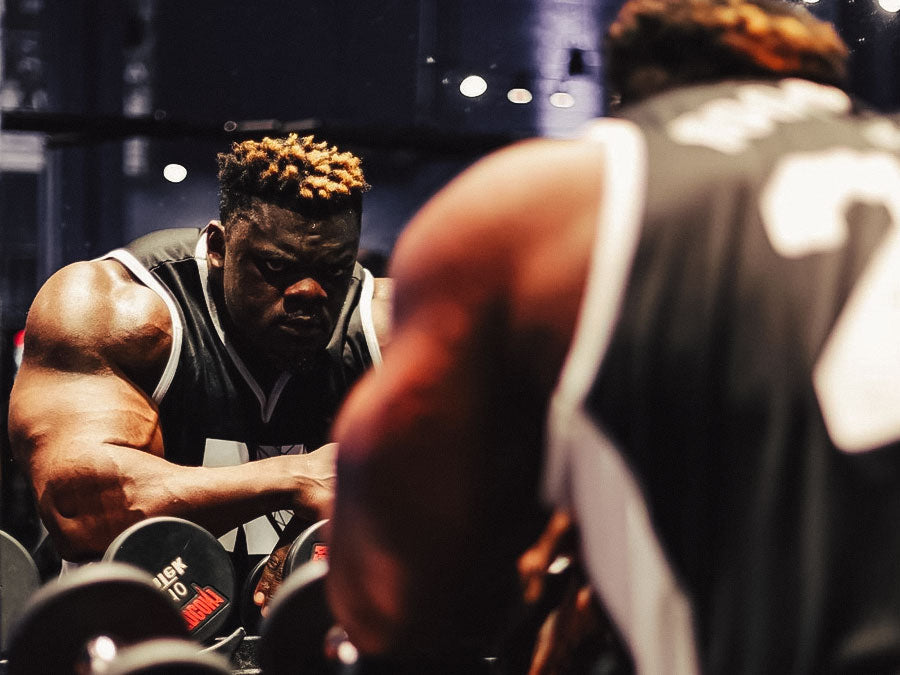By Ron Harris
An embarrassing trap tale
Rather than kick things off by convincing you why huge traps are a wonderful attribute you should want for yourself, I’ll start with an amusing anecdote from my earliest days as a wannabe bodybuilder in the late 1980s when I was a teenager.
In this era, I weighed anywhere from 145 to 175 pounds at 5'8", hardly a mass monster. Desperately wanting to appear much larger, I was fond of oversized sweatshirts made by T-Michael, inside of which I literally floated, and I also had a whole collection of what were called “boatneck” sweatshirts.
These had enormous neck holes to show off the trapezius muscle, and the sleeves went a couple of inches past the elbows. I liked this style so much for its ability to create an illusion of size that I cut a couple of regular sweatshirts into these. It was common practice to wear a stringer tank top under boatnecks.
Before I ever did a single set of shrugs, my traps had a good head start from high school wrestling, where we did neck bridges at every practice. So, whenever I wore one of my boatnecks, I kept my traps rolled forward and flexed as if I were hitting a crab most-muscular pose—all the time! If all you saw were these relatively big traps, your mind would fill in the rest and assume the rest of my torso was equally developed. It was not.
There were many times when my traps would be sorer after a day of walking around in a boatneck than if I had done 30 sets of shrugs. The only reason I stopped perpetrating this ridiculous deceit was that a friend of mine called me out on it and made me feel like a clown.
Eventually, boatnecks went out of style just like the striped Hot Skins tights and baggy pants, but I still have fond memories of how I used them along with my traps to trick unsuspecting passersby into thinking I carried 20 to 40 more pounds of muscle than I did at the time.
Table of content
Traps communicate raw power
Now we get to that part where I tell you why you should want to maximize the development of your traps. Even if they don’t get nearly the amount of focus and discussion as muscle groups such as the arms, chest, or legs, traps impart a rugged look of power that simply can’t exist without them.
Think of some of the most thickly muscled bodybuilders of the past few decades, men such as Dorian, Ronnie, Jay, Phil, and Branch. These guys had traps that scraped their earlobes! Top powerlifters and strongmen also typically have monster traps, in large part because of constant heavy work on things such as deadlifts and the farmer’s walk.
In contrast, whenever you see someone who has a good back and shoulders, but the traps are lacking, it’s an odd, incomplete look, especially from behind. Big, bulging traps tie it all together and make you look like a true beast. Luckily, from my observation over many years, the traps seem to be a highly responsive muscle group for most people if they train them hard and properly. Let’s look at the best exercises to blow up your traps.
Also Read: The Ultimate Guide to Trap Workouts
Barbell shrugs
 This is the classic trap exercise in the way that the bench press is “the” chest exercise and squats are the king of lower body movements. The easiest way to set the exercise up is to go to a squat rack and simply use the wide “bottom step” to rest the barbell on at about waist level. There’s no need to set it on the floor where you would have to do a deadlift every time to start your sets.
This is the classic trap exercise in the way that the bench press is “the” chest exercise and squats are the king of lower body movements. The easiest way to set the exercise up is to go to a squat rack and simply use the wide “bottom step” to rest the barbell on at about waist level. There’s no need to set it on the floor where you would have to do a deadlift every time to start your sets.
Holding the bar with a shoulder-width overhand grip, use the power of your trapezius to shrug up so that your shoulders move as far away from the ground as possible. Use only a straight up and down movement and don’t roll your shoulders back.
This would actually take some of the stress away from your traps and transfer it to the surrounding muscles of your shoulders and around your scapulae/shoulder blades.
One tip you won’t read anywhere else: Be sure to have your penis positioned safely away from the barbell lest it get damaged as the heavy bar drags up and down against your body. You could damage it, and that’s no fun!
Dumbbell shrugs
 Personally, I always preferred dumbbell shrugs to the barbell. Shrugging with my hands in a neutral position (both palms facing in toward the midline of the body) always felt more natural than having the hands pronated (palms facing behind).
Personally, I always preferred dumbbell shrugs to the barbell. Shrugging with my hands in a neutral position (both palms facing in toward the midline of the body) always felt more natural than having the hands pronated (palms facing behind).
I am also able to shrug up just a little higher, which is important in this case as the range of motion for shrugs is so short in the first place. Obviously, the ideal place to do these is standing directly in front of the dumbbell rack so that all you need to do is take the ‘bells off to start and then replace them on the rack when your set is done.
Armpit rows
I wish I could tell you where I got these from and give proper credit, but it’s been decades. This exercise looks identical to a dumbbell shrug at the start, holding the dumbbells down at your sides. Instead of simply shrugging, you drag the ‘bells up the sides of your torso toward your armpits.
You’ll only get about halfway there, at which point you should strive to contract your traps for a second before controlling them back down. Don’t even think about going as heavy on these as you do for shrugs. Half the weight or a bit less is all you need to burn up your traps.
Close-grip upright rows
You won’t see many people ever doing these, and that’s a shame because they’re a fantastic way to build huge traps. Johnnie Jackson was known to do close-grip upright rows with 315 pounds, and his traps actually did scrape his earlobes.
You can use a standard Olympic bar, though the length will make it tough to balance. I prefer using an EZ-curl bar with the narrowest grip option. The key point is to keep your elbows flared up and out. You will feel a pronounced contraction of the traps at the top of each rep. I strongly suggest starting out very light and getting the proper feel for this movement before loading up the bar.
3 keys to getting the most out of shrugs
Full range of motion for shrugs
As I mentioned, shrugs have a short range of motion in comparison to most other exercises. Think about how far your shoulders travel in a shrug, just a few inches. The last thing you want to do is truncate that range of motion any further.
We’ve all seen that guy, or maybe even been that guy, who slaps four or five plates on each side of the bar or grabs the heaviest pair of dumbbells the gym owns and proceeds to do a series of spastic, bouncy reps in which the traps hardly move. Instead, you should start every rep from a good stretch of the traps and then shrug up as high as you can.
Higher reps for shrugs
Another adjustment you should make in consideration of the shorter range of motion on shrugs is to do more reps to provide enough time under tension to stimulate growth. Rather than the standard 8 to 12 reps you may successfully do for other upper body muscle groups, the traps will typically respond better to 15 to 20 reps.
You should get a pump and feel sore the day after a productive trap workout. Don’t worry that you’re not going as heavy as you could with fewer reps. Would you rather impress people with how much weight you use or how freaky your traps are?
Strap it on
There are those who sneer at accessories like a weight belt or wrist straps as being less “hardcore” than just using your manly grip strength. They will also point out that eschewing straps will foster a stronger grip. That’s great if you’re an arm wrestler, but it will seriously hamper your potential gains in back training.
The back, of which your trapezius makes up roughly a third, is a very powerful complex of muscles capable of pulling hundreds of pounds. Although grip strength won’t be a limiting factor for newbie trainers, at some point their lats and traps will greatly outpace grip strength.
Think of it this way: Let’s say that without straps to bolster your grip, the best set you can do is 225 pounds on the bar for 8 reps before your grip gives out and you have to drop the bar.
Using straps, you could probably get 20 reps. More importantly, you could go even heavier, perhaps 275 to 315 for 12 reps. Don’t worry about being judged or looked down on for using a pair of wrist straps. Worry instead about missing out on the massive traps you could have if you did use them.
Traps with delts or back?
Should you train traps with the back or shoulders? The trapezius is involved in every exercise for both, so it doesn’t really matter. Just don’t train traps the day before either back or shoulders, as sore traps will interfere with a productive workout for either of those muscle groups.
3 Killer Trap Routines
Dumbbell or barbell shrugs - 5 × 15–20
30/30 second static hold* - 2 sets
*Using moderate weight, hold the peak contraction of the shrug position (the flex) for 30 seconds, then lower into a full stretch and hold for another 30 seconds.
Barbell shrugs 4 × 15–20
Close-grip upright rows 4 × 12
Dumbbell armpit rows 4 × 10–12
Superset with
Dumbbell shrugs 4 × 15
(Note: Because you never let go of the dumbbells for the course of these 4 supersets, wrist straps are a must.)
Visit our Shop to Buy the Best Body Building Supplements
Read Our Top Read Content:





